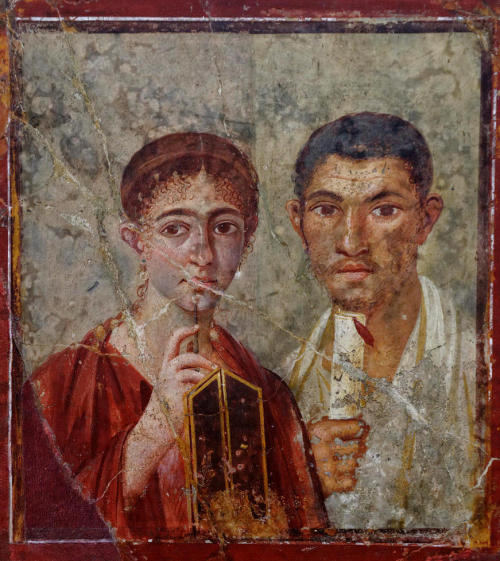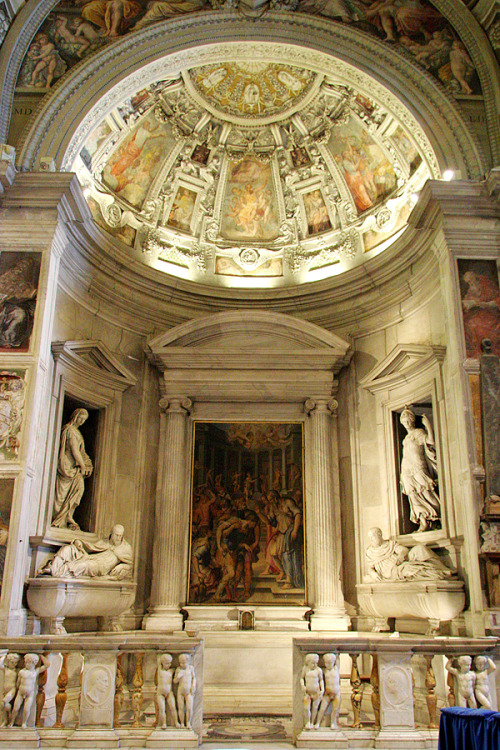#frescos
MWW Artwork of the Day (3/30/16)
Early Imperial Period (Roman, 27 BCE-117 CE)
Portrait of Terentius Neo and his Wife (c. 45-79 CE)
Fresco from their house, Region VII, Pompeii
Museo Archeologico Nazionale, Naples
Pliny complained of the declining state of Roman portrait art, “The painting of portraits which used to transmit through the ages the accurate likenesses of people, has entirely gone out … Indolence has destroyed the arts.”
In Greece and Rome, wall painting was not considered as high art. The most prestigious form of art besides sculpture was panel painting, i.e. tempera or encaustic painting on wooden panels. Unfortunately, since wood is a perishable material, only a very few examples of such paintings have survived, namely the Severan Tondo from c. 200 CE, a very routine official portrait from some provincial government office, and the well-known Fayum mummy portraits, all from Roman Egypt, and almost certainly not of the highest contemporary quality. The portraits were attached to burial mummies at the face, from which almost all have now been detached. They usually depict a single person, showing the head, or head and upper chest, viewed frontally. The background is always monochrome, sometimes with decorative elements.[20] In terms of artistic tradition, the images clearly derive more from Greco-Roman traditions than Egyptian ones. They are remarkably realistic, though variable in artistic quality, and may indicate the similar art which was widespread elsewhere but did not survive. A few portraits painted on glass and medals from the later empire have survived, as have coin portraits, some of which are considered very realistic as well.
(Wikipedia extracts)
For more Pompeii frescos, visit this MWW Special Collection:
* MWW Ancient/Medieval Art Gallery
Post link
Cappella del Monte in the Church of San Pietro in Montorio (Rome). Designed by Giorgio Vasari, the ceiling of the chapel contains the fresco The Conversion of St. Paul, by Vasari. On each side, tombs of AntonioandFabiano del Monte with statues of Justice and Religion sculpted by Bartolomeo Ammannati.
Post link











